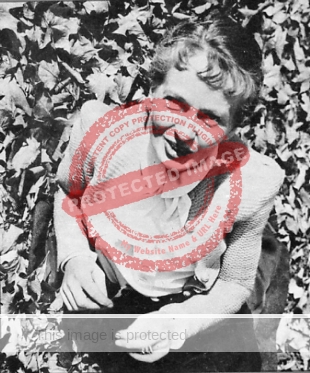Barbara Joan Keppel-Compton (1902-1999), also later known as Barbara Keppel-Compton Witt, and Barbara Moravec, used the name Barbara Compton for her novel To The Isthmus (1964), partially set at Lake Chapala in the 1940s. The novel is largely autobiographical, and events and characters are only thinly disguised. (We look more closely at the novel’s links to Ajijic in a separate post).
Who, exactly, was the author? Keppel-Compton was born in Southampton, U.K., the middle of five children of John Herbert Keppel-Compton (1869-1940), a medical doctor, and his wife Anne Sylvester Webb. Prior to 1940, the family had also lived in Hampshire, Surrey, London, Bexhill-on-Sea, and Woodhall Spa in Lincolnshire.
The Keppel-Compton’s youngest child, Ursula Mary Keppel-Compton (1907-1997) became better known as Ursula Niebuhr. After studying at Oxford, and being awarded double firsts in history and theology, she became the first woman to win a fellowship to the Union Theological Seminary in New York. Within a year, she married Reinhold Niebuhr, one of her former teachers, in 1931 in Winchester, UK. The couple made their home in New York City where Ursula completed her studies and went on to found the Department of Religion at Barnard College in New York City. She remained head of the department until her retirement in 1965.
As we shall see, Barbara Keppel-Compton was to join her sister in New York in the middle of the second world war.
Much of what we know about Barbara Keppel-Compton comes from the Howard Gotlieb Archival Research Center at Boston University, which includes the The Barbara Compton Collection of manuscripts, correspondence, and other material. Additional details can be gleaned from a close reading of To The Isthmus.
It is apparent that Barbara spent some time, as a relatively young woman, in both Prague (1924-1927) and Africa (1928-1929). She spoke several languages, including German and Czech.
Keppel-Compton was co-translator of two works by German psychologist Fritz Kuenkel: Jugend-Charakterkunde (“What it Means to Grow Up”), with Hulda Niebuhr (older sister of Reinhold Niebuhr) in 1936, and Charakter, Wachstum und Erziehung (“Character, Growth, Education”) with Basil Druitt in 1938.
During the mid-1930s, Keppel-Compton was living with her parents in Surrey, and then London (1938-1939).
In September 1937, two years prior to the start of the second world war, Keppel Compton met German clinical psychologist Gerhard E. Witt, described in her novel as rather tall, in his late 40s with silver-grey hair. After a hesitant start, their relationship became intense, and they spent two weeks together in Paris one September. At the outbreak of war, fearful of his future in London, Witt moved to the U.S. and took a position at Union Theological Seminary, the same institution where Barbara’s sister Ursula had studied.
The following year, Barbara wanted to join him but was denied permission to leave the country. (Posters at the time announced that no one between the ages of 16 and 60 was allowed to leave the country). In December 1941, Witt asked her to marry him and she was finally able to travel to the U.S. as his fiancee.
They married and lived together for a while, but soon discovered that even if they couldn’t exactly live apart, they couldn’t live together all the time either, so they took separate apartments in Manhattan.
In 1945, they made plans to visit Mexico but Witt persuaded his wife to go on ahead to Ajijic, to a small inn a German friend in New York had told him about, where he would drive down to join her and travel together back to California and then across to New York. Barbara did indeed travel to Ajijic early in 1946 and stayed at the Posada Heuer, a simple establishment run by a German brother and sister on the lakeshore. By the time it was obvious that Witt had no intention of joining her, she had met and was falling under the spell of Richard Moravec.
Witt died later that year. Following his death, Barbara and Richard Moravec (whom she later married) edited Witt’s book Active Psychology and the Welfare and Progress of Man: Notes on the Establishment of a Non-medical Practical Psychology, Written 1941-1946 (published in 1947). A reviewer in the Journal of Consulting Psychology described it as “the posthumously published notes of a brilliant psychotherapist”. The Howard Gotlieb Archival Research Center also has manuscripts relating to Witt’s poetry, 28 sketches and a list of 324 of his paintings.
Barbara Keppel-Compton married Richard Zdenko Moravec, a chemical engineer and film-maker, in Albemarle, Virginia, in 1951. The couple worked together on at least two motion pictures: The Story of A Volcano, about Paricutin Volcano (1952) and With Malice Toward None (1955). By 1955 the Moravecs were living in Yellow Springs, Ohio. Barbara Moravec spent her final years in Surrey, England.
Sadly, and notwithstanding the claim on its inside back cover that it is “her first novel to be published in America”, To The Isthmus appears to be the first and only novel she ever published anywhere. Interestingly, though, the Howard Gotlieb Archival Research Center includes drafts of two more novels, one untitled and one with the title Margaret Townshend. The archive also has several short stories by Keppel-Compton, as well as a play, and poems.
If any reader is close enough to Boston University to take a look at these unpublished novels, we would love to learn more about them.
Sombrero Books welcomes comments, corrections or additional material related to any of the writers and artists featured in our series of mini-bios. Please use the comments feature at the bottom of individual posts, or email us.
Tony Burton’s books include “Lake Chapala: A Postcard History” (2022), “Foreign Footprints in Ajijic” (2022), “If Walls Could Talk: Chapala’s historic buildings and their former occupants” (2020), (available in translation as “Si Las Paredes Hablaran”), “Mexican Kaleidoscope” (2016), and “Lake Chapala Through the Ages” (2008).
